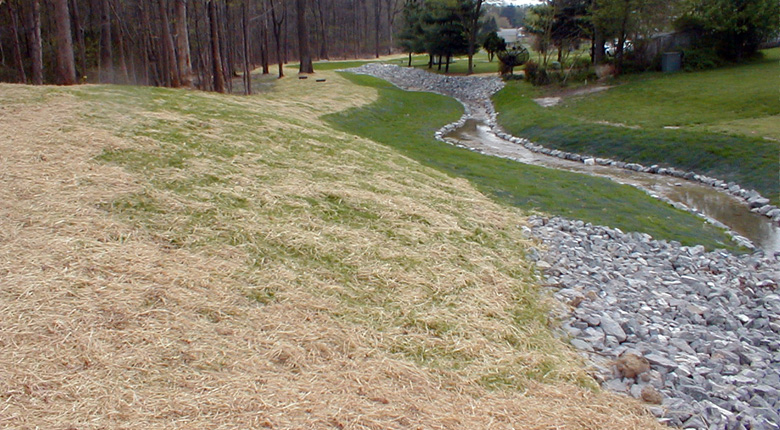
Overview
Timmons Group was contracted to study the Magnus Lane Drainage System. Three unique problems were identified within the study limits. These included channel erosion, inadequate channel capacity to convey the 10-year storm and encroachment of the 100-year floodplain on two adjacent homes. Severe channel and bank erosion has occurred throughout the entire project area, with some portions of the embankment dangerously steep and abrupt. Channel erosion has undermined a fence and may threaten garages and sheds if not corrected.
Alternatives that were evaluated for solving the erosion and flooding problems included:
- Construction of a storm sewer to convey the 10-year storm
- Widening the channel with structural bank stabilization
- Widening the channel with bio-engineering bank stabilization
- Structural bank stabilization without channel widening
- Bio-engineering bank stabilization without channel widening
These five alternatives were evaluated in terms of their ability to solve the problems, relative cost, easements required, environmental permitting issues, impacts to residents during construction and maintenance requirements.
The chosen alternative was a state of the art bio-engineering stream channel stabilization design. Bio-engineering consists primarily of arranging and imbedding cuttings of live plant material in the ground where they act as soil reinforcements and barriers to earth movement. Vegetative control traps eroding soil from adjacent land, provides shade, enhances the natural appearance of the stream, serves as a habitat for wildlife and fish and holds the soil in place with the root structures.